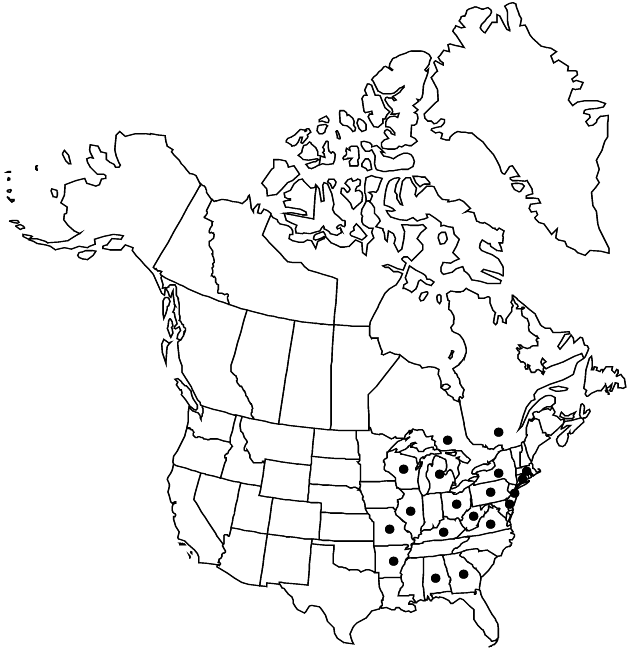Rudbeckia fulgida var. speciosa
Rhodora 59: 297. 1958.
Stems glabrous or sparsely villous-hirsute (hairs spreading). Leaves: basal blades broadly lanceolate to ovate, 2–6.5 cm wide, lengths to 2 times widths, bases mostly rounded, margins entire or crenate, faces sparsely to moderately hairy; cauline petiolate (proximal) or ± sessile (distal), elliptic to lanceolate (becoming somewhat panduriform distally), not notably smaller distally, bases cuneate, attenuate, or auriculate, margins coarsely serrate to lacerate, faces scabrous to strigose. Phyllaries reflexed, 1–2.2 × 0.2–0.7 cm, glabrous or sparsely hairy. Receptacles 11–18 mm diam.; palea margins ciliate, faces glabrous. Ray florets 12–21; laminae 20–40 mm. 2n = ca. 76.
Phenology: Flowering summer–fall.
Habitat: Mesic open woodlands
Elevation: 30–200 m
Distribution

Ont., Que., Ala., Ark., Conn., Del., Ga., Ill., Ky., Mass., Mich., Mo., N.J., N.Y., Ohio, Pa., Va., W.Va., Wis.
Discussion
Variety speciosa has rarely been introduced in Canada.
Selected References
None.